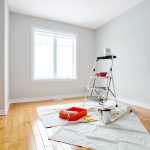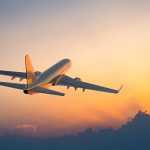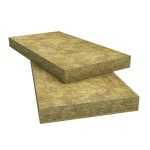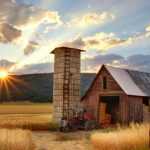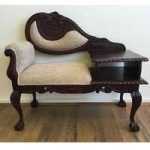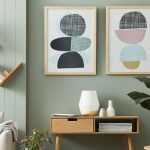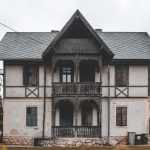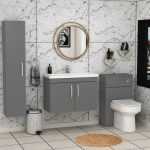Maintenance is critical whether you are in charge of a public playground or have a playset in your home. Playground equipment that is properly maintained keeps children safe by preventing or limiting injuries. It also extends the life of your equipment, allowing you to use it for many years to come.
If you’re not sure where, to begin with, playground upkeep, you’ve come to the correct spot. We’ve created a playground maintenance checklist to assist you to keep your playground in great shape no matter what season it is. Let’s get started!
Put Someone in Charge of Maintenance: When playground upkeep is not allocated, it is possible that it may fall between the cracks. An administrator, staff member, or committee can oversee playground upkeep. Duties can be delegated to instructors, aides, employees, parent volunteers, or even a third party.
Equipment Should be Installed and Inspected by Certified Professionals: Trained playground specialists should examine older playgrounds on a regular basis, and new equipment should only be installed by certified professionals.
Protect the Playground: Non-students who may abuse or damage the equipment and playground area can be kept at bay by fencing and other protective obstacles on your school playground. Vandalism-related maintenance can be reduced with the use of alarms or cameras.
Create a Reporting System: Set up a reporting system so that instructors, kids, and parents may report any problems they notice on the playground. The reporting system may be as basic as a clipboard in a school corridor or near the playground, or it could be as complex as an online reporting form.
Read and Understand Equipment Manuals: The instructions that come with your Inclusive playground equipment will set the groundwork for the various sorts and frequencies of maintenance for each item. If you have any particular queries or concerns, contact the playground manufacturer.
Shade Structures: Preventative Maintenance: Shade structures can assist prevent maintenance and repairs by shielding equipment from the sun’s rays. Furthermore, the dangerous UV rays might cause equipment to overheat, resulting in student injury.
Broken Equipment: Examine the equipment for damaged parts such as loose bolts, missing caps, and fractures. Make a point of inspecting the plastic for fractures. If you do locate a damaged item, you should assess the severity of the problem and decide if it has to be shut down immediately, fixed as soon as feasible, or mended when time and money allow.
Broken Glass, Trash, and Debris: Maintain the cleanliness of your playground. You may avoid wounds and unhygienic situations by properly disposing of broken glass and other garbage. If you notice that garbage and debris are a constant problem in your outdoor play area, you may want to consider installing trash cans to help relieve the situation.
Loose Anchoring: If the equipment is not properly secured, its durability is called into doubt. If a piece of play equipment is loose, you should probably shut it down until it can be repaired. Always consult with the manufacturer to find out what they recommend.
Inspect Damage: Insects can do significant harm to your equipment if it is made of natural materials. Keep in mind that incorporating natural materials into your play area will need regular maintenance. Check for rough places and sand them down on a regular basis to help avoid splinters. You may also seal in wood to help smooth it out and maintain its color.
Problems with Surfacing: Your surfacing is critical to ensuring a safe playing environment. If your playground has loose-fill surfacing, be sure it hasn’t been displaced in high-traffic locations such under swings and slide exits. Marking optimum surfacing depths on equipment posts can help with this. Check for holes, flakes, and buckling if you have unitary surfacing. You should seal your unitary surfacing every other year and fix any holes or cracks as soon as you see them.
Choose the Right Site: Selecting the best place for your play area is the first step to making sure your play equipment is safe. You should choose somewhere level that is free of any obstacles that could cause injury. Look for an area that is at least six feet from other structures, especially if you are installing swings, to ensure there is enough space available to play. Any metal elements that can heat up in the sun should be in the shade or out of direct sunlight to reduce the risk of burns. Try to separate different pieces of play equipment too, giving them plenty of space between each other.
Grounding Security: When it comes to safety, the space beneath the play equipment might be just as essential as the item itself. The current grass does not provide the necessary protection for your children to avoid injury. Cover the ground with a shock-absorbing substance instead to lessen the impact if your youngster falls. On home playgrounds, popular surface materials include sand, rubber, and mulch. To create a thick enough ground cover to absorb stress adequately, 9 to 12 inches of the material is required. Extend the ground cover at least 6 feet beyond the play structure’s perimeter. Mulch settles over time, so you may need to apply more on a regular basis.
You should also ensure that the equipment is adequately fastened. The sort of anchoring required is determined by the structure. To maintain the structure’s stability, always adhere to the manufacturer’s anchoring recommendations. Any hardware used to secure your play equipment should be buried and covered with a protective covering so that it does not trip children or cause injuries if a child falls on it.
Maintain Your Equipment: Once your backyard playground equipment is assembled, you should follow safety guidelines for keeping it maintained. Check your play equipment regularly and tighten up any nuts or bolts that might have come loose, and look for signs of wear and tear. It’s a good idea to keep the manufacturer’s instructions so that you can order new parts if anything needs to be replaced.
Author Bio
Diane Carter
Diane writes for Home Improvement, Playgrounds, Lifestyle, Garden, travel-related topics additionally. He had a passion for the recreation and design industry for more than ten years. Diane has become an experienced Redesign in this industry. His goal is to help people with his vast knowledge to assist them with his best suggestions about different activities: Playground Equipment at Club, Hills – Shade Structures, splash pads, Picnic Shelters.

